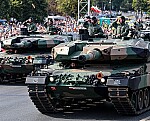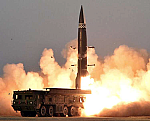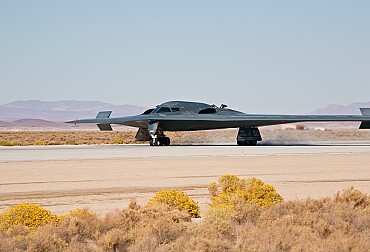Decisive response: U.S. launches airstrikes against Iran-backed forces after attack on American soldiers
In a significant escalation of tensions, the United States launched a series of airstrikes across Iraq and Syria, targeting facilities associated with Iran’s elite Islamic Revolutionary Guards Corps Quds Force and various Iran-backed militia groups known collectively as the Islamic Resistance in Iraq. This military action was a direct response to a deadly drone attack that occurred on a remote base in Jordan, resulting in the tragic loss of three American soldiers and leaving over 40 others wounded.

President Joe Biden, addressing the nation, underscored the retaliatory nature of the strikes, stating, “Our response began today. It will continue at times and places of our choosing.” This firm stance follows a period of intense scrutiny and criticism from Republican lawmakers, who not only condemned the initial attack but also urged for a more aggressive posture towards Iran, including the possibility of strikes within Iranian territory.
The operation, described by military officials as involving more than 85 targets, was executed with precision, leveraging a mix of aircraft including long-range bombers deployed directly from the United States. According to CENTCOM, the targets encompassed a broad array of military infrastructure, ranging from command and control operations to intelligence centers and munitions storage facilities, all aimed at crippling the capabilities of the militias and their Iranian backers.
Despite the adverse weather conditions that delayed the operation, the strikes were deemed highly successful, with military officials reporting numerous secondary explosions at the target sites, indicating the destruction of significant arms and munitions depots. Defense Secretary Lloyd Austin signaled the possibility of further actions, emphasizing the United States' commitment to holding the IRGC and affiliated militias accountable for their aggression against U.S. and coalition forces.
The scope and scale of these airstrikes have been noted by experts and observers as unprecedented in the context of U.S. engagements with Iran's proxies. Charles Lister of the Middle East Institute highlighted the extensive damage and the strategic implications of the strikes, particularly in terms of degrading the enemy's command and control capabilities and their arsenal of strategic weapons.
President Biden, while affirming the United States' right to defend its personnel and interests, reiterated his administration's preference for peace and stability, stating, “The United States does not seek conflict in the Middle East or anywhere else in the world.” Nonetheless, he issued a stern warning to adversaries, declaring that any harm to Americans would be met with a decisive and proportional response.
This latest development marks a significant escalation in the longstanding tensions between the United States and Iran-backed entities in the region, underscoring the complex dynamics at play and the potential for further conflict in the already volatile Middle East landscape.








